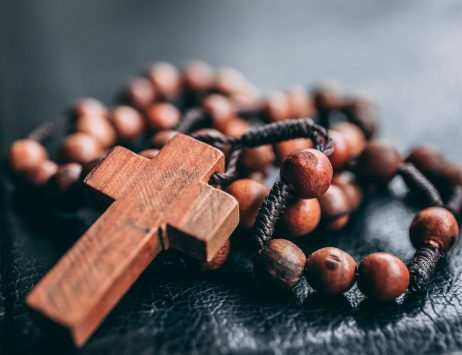By Jon Stotts
These times of social distancing and the absence of public liturgy have surprised me with how much I rely on the Sunday liturgy to bolster and sustain my sense of connection to God. And I suspect that I am not alone in confessing that the digital alternative — watching a live streamed or prerecorded Mass – just isn’t a suitable replacement. When asked about his recent experiences of celebrating the liturgy alone, the pastor of my parish said, “The liturgy is a dance with and among the people. It’s like I’m trying to dance with myself. It doesn’t quite work.” I find that the same is true from the perspective of someone watching Mass online: it’s like viewing other people dancing on Youtube and trying to dance along. It’s hard not to feel a little silly.
The Eucharist is often the most familiar and beloved way that Catholics connect to God and the community of the faithful. As the Catechism of the Catholic Church explains, the Eucharist offers us the substantial presence of Christ (CCC 1373). But the Catechism goes on to assure us that while he is present especially in the Eucharist, Christ is present to us in a number of other ways as well:
- In the other sacraments
- In the place where two or three gather to pray in his name
- In those who suffer from poverty
- In those who suffer from sickness
- In those who are imprisoned
- In the Church’s ministers
These are all truly real presences of Christ, no less real than the presence of Christ in the Eucharist. And to this list we might add a seventh, drawn from elsewhere in the Catechism: Christ is truly present in the Sacred Scriptures (CCC 103). Indeed, the presence of Christ is so strongly present in the Scriptures that the Catechism, quoting from Dei verbum (the Second Vatican Council’s Dogmatic Constitution on Sacred Scripture), identifies them with the Lord’s Eucharistic body:
“[T]he Church has always venerated the Scriptures as she venerates the Lord’s Body. She never ceases to present to the faithful the bread of life, taken from the one table of God’s Word and Christ’s Body.”
In other words, the purpose of hearing the Scriptures is identical to the purpose of receiving the consecrated bread and wine: communion with the Father of the Lord Jesus in the power of the Holy Spirit. The Scriptures and the Eucharist are not the same thing, but they each invite us, in their own distinct and complementary ways, to participate in the same reality. I’ll spend my next few posts exploring just how the Scriptures are a means of communion with the God who is mysteriously redeeming the world.
I miss the Eucharist. I do not think it’s accurate to say that God has positively willed the evils of COVID-19 upon us, or that God has purposefully removed the Eucharist from our midst.
Nevertheless, our distance from the Lord’s table is an invitation for us to see these other real presences of Christ among us.
It’s an opportunity for us to grow in our ability to see God at work in the world. Then, when we are once again free to celebrate the Eucharist as a community of faith, we will arrive with a deeper appreciation for the real presence of Christ. Not just because we have gone without the Eucharist for so long, but because we will see with grateful and renewed eyes how the Eucharist gathers and reflects the many presences of Christ among us.

Jon Stotts is a professional lay ecclesial minister in Nashville doing Christian initiation, ongoing conversion, and parish enrichment at Christ the King Catholic Church. Jon has a Ph.D in Religion from Vanderbilt University and a M.A. in Theology from Saint Meinrad School of Theology. He’s married and has three kids. In his free time he writes, bakes bread, and dances with his family.



